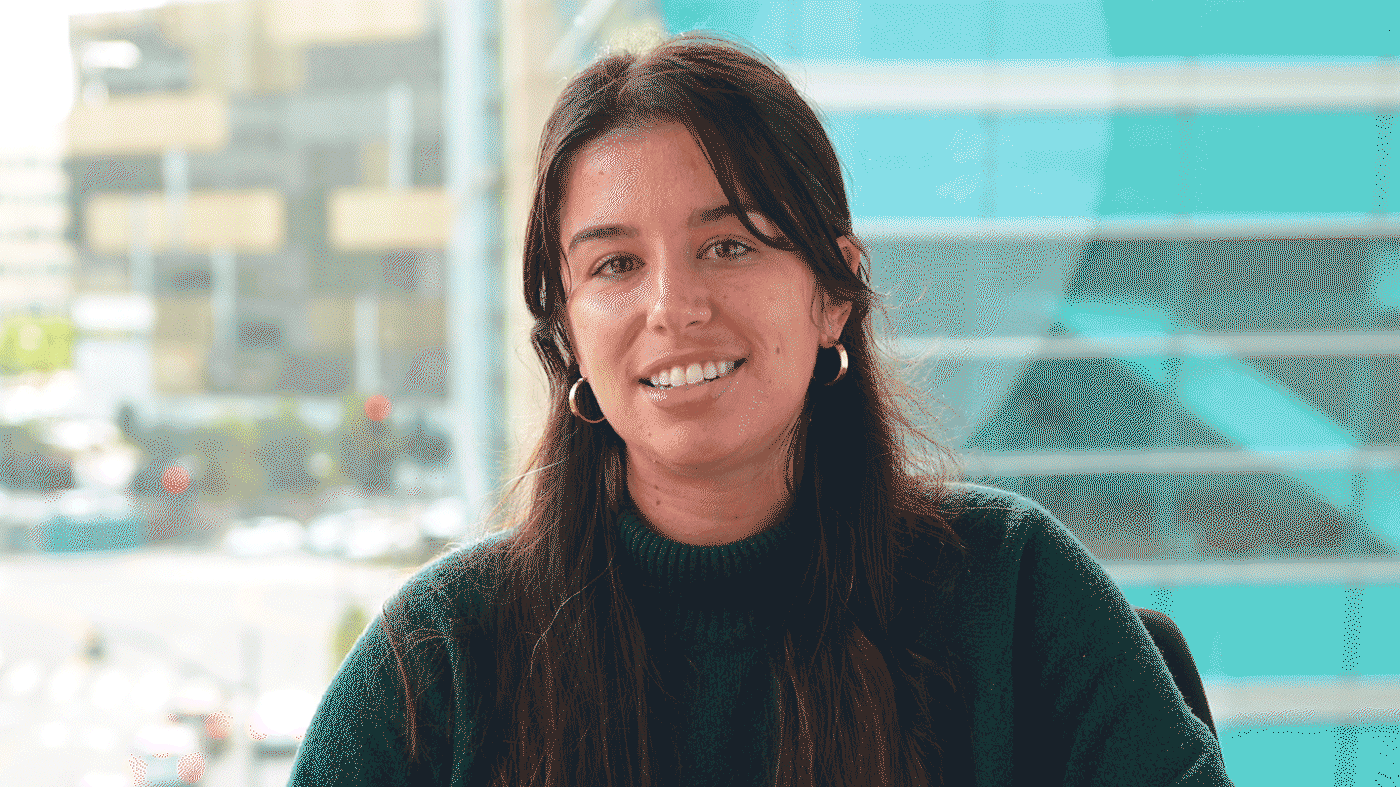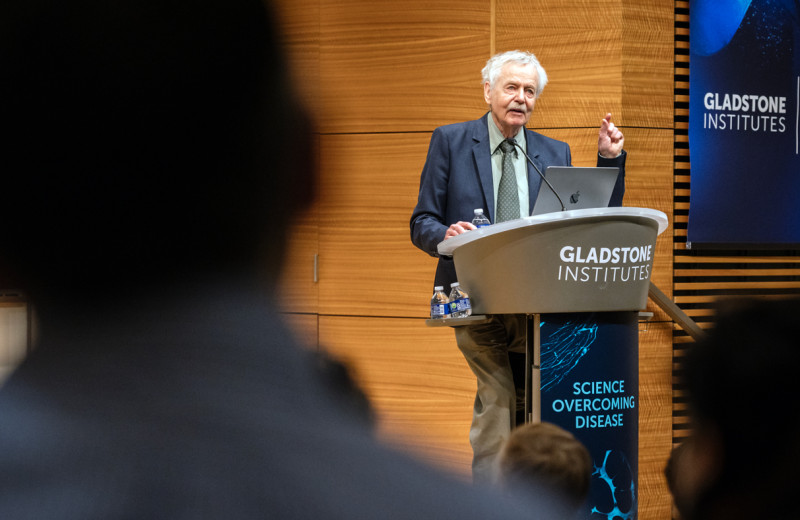Gladstone NOW: The Campaign Join Us on the Journey✕

Graduate Student Emily Bulger describes her work in the Bruneau Lab, her family roots in science, and the scientist she'd like to have a conversation with.
Emily Bulger (she/her) is a graduate student in the lab of Benoit Bruneau. After graduating from UC Berkeley with a degree in molecular environmental biology, Bulger returned to her hometown of San Diego, California, and worked as a research associate at UC San Diego, studying ways to use genetic engineering to reduce the spread of malaria. She is now a PhD candidate at UC San Francisco in the Developmental and Stem Cell Biology Program.
What brought you to Gladstone?
Some of the best advice I got when deciding on a lab was to choose one with scientists I wanted to become like. Gladstone stood out to me not only for its incredibly talented scientists but also because of its emphasis on crafting a highly supportive community, whether that’s on the organizational scale, lab scale, or through programs like Gladstone GO, which is Gladstone’s Graduate Student Organization. Grad school is hard, but the mentorship, collaborations, and friendships I’ve been able to forge in my time here have made it a productive and rewarding experience.
What do you like about Gladstone?
I really appreciate the collaborative science happening at Gladstone. The resources we have to tackle the most interesting questions are unparalleled, and I appreciate how each conversation or presentation leads me to see parts of my own project in a new way.
Were you interested in science as a child?
As a child, I became very interested in biodiversity, and particularly the myriad of bizarre and creative solutions nature has found to ensure a species survives. From seagulls that have special organs to filter salt out of the water they drink to insects that rely on fluid hydraulics to move around, I was fascinated by how such a crazy diversity of organisms could coexist. As I started undergrad, my interests developed into understanding how these variations emerge and how changes at the genetic level contribute to this biodiversity.
Why did you decide to advance your studies in graduate school?
I chose to study developmental biology in graduate school because I think understanding how organisms develop is often the foundation to understanding why adult forms look the way they do. This can be said for both funky animal adaptations or genetic misregulation that causes disease. As I went through my rotations as a first-year graduate student, I learned about the power of stem cell biology to reveal patterns in cell behavior, and was inspired to join Gladstone and particularly the McDevitt and Bruneau labs to learn how genes control early cell behaviors that are crucial to patterning the adult organism.
Can you describe your current research project?
My current project is trying to understand how the dosage of a specific gene influences the development of the early embryo, about two weeks post-fertilization. The gene I’m focused on is called “Brachyury,” which roughly translates to “no tail” in Latin because mice without this gene are missing most of the posterior half of their body, and mice with only one copy instead of two are missing tails or have short and/or stubby tails. In humans, mutations in Brachyury tend to result in congenital spinal malformations, but we don’t necessarily know why.
For my project, I use human stem cells that are engineered to have zero, one, or two copies of Brachyury, and I grow them in a dish using a protocol that mimics that early stage of embryonic development. This protocol makes my cell colony look a bit like a bullseye, with pre-neural cells (ectoderm) in the middle, pre-muscle cells (mesoderm) in the next ring, pre-gut cells (endoderm) in the ring after that, and pre-placenta-like cells (extraembryonic) in the outermost ring. Using this model, I can assess how the Brachyury mutation influences which cell types the stem cells are turning into and how they behave, including cells that go on to build the spinal cord and adjacent muscle tissue.
What or who influenced your decision to work in science?
My grandpa was a herpetologist and helped curate museums, including the California Academy of Sciences right here in San Francisco. He passed away when I was little, but I think he definitely instilled the willingness to follow curiosities in my mom and in me.
What do you do when you are not working?
I love hiking—Mount Tamalpais and Tilden Regional Park are favorites—and I also enjoy painting and messing with my lovably sassy cat, Smidge!
If you could learn to do anything, what would it be?
I would love to be able to intrinsically understand and speak any language in the world. Bonus points if I could also learn how to keep stem cells happy without feeding them nearly every day.
What is your hidden or unique talent?
I used to frequent classes for aerial acrobatic silks and lyra, which is aerial hoop. These days I tend to climb tall things at the rock climbing gym instead, but I still have a special place in my heart for the circus skills.
If you could meet any scientist from any point in time, who would it be and why?
I would love to meet Jane Goodall. It would be fascinating to learn about her conservation efforts and hear her stories from the field—and also hear about her experience of being one of few established female scientists in the 1950s and how this dynamic has evolved for her over the years.
Want to Join the Team?
Our people are our most important asset. We offer a wide array of career opportunities both in our administrative offices and in our labs.
Explore CareersA Sculptor of Modern Regenerative Medicine
A Sculptor of Modern Regenerative Medicine
Among his myriad accomplishments, Rudolf Jaenisch—winner of the 2025 Ogawa-Yamanaka Stem Cell Prize—was the first to demonstrate the potential of induced pluripotent stem cells to treat disease.
Awards Ogawa Stem Cell Prize Profile Regenerative Medicine Stem Cells/iPSCsMeet Gladstone: Shijie Wang
Meet Gladstone: Shijie Wang
Shijie Wang, a postdoctoral scholar in Steve Finkbeiner’s lab, uses artificial intelligence, robotics, and stem cell technologies to uncover how brain cells die in neurodegenerative diseases like Alzheimer’s and Parkinson’s.
Profile Neurological Disease Finkbeiner Lab AI Robotic MicroscopyMeet Gladstone: Oscar Yip
Meet Gladstone: Oscar Yip
Oscar Yip is advancing Alzheimer’s research in Yadong Huang’s lab at Gladstone while drawing inspiration from his family, community, and his broader goal of helping patients.
Graduate Students and Postdocs Profile Alzheimer’s Disease



